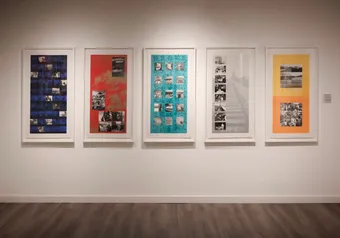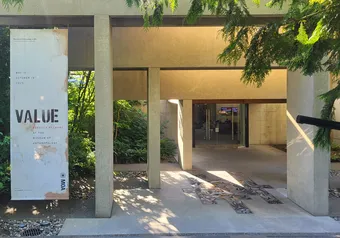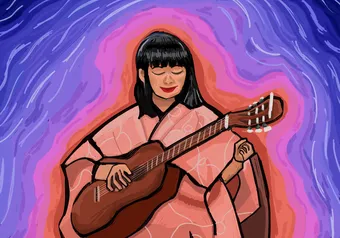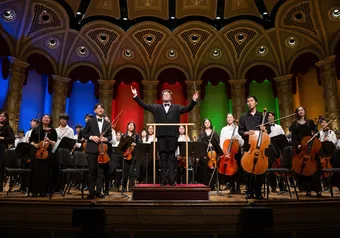As far as I or any student on the UBC campus can attest, the Chan center, Music Building, Frederick Wood Theater, and Belkin Art Gallery all exist somewhere on campus, maybe some of us even know where. Unfortunately, I can place good bets that your average Sauder, Engineering or even Arts students knows what the hell actually goes on in those buildings and when. Thankfully, two smart passionate women down at Sauder have realized what our wonderful administration seems to have failed to realize for the past 60s years, (despite teaching classes one it), marketing is important. Thus the creation of a new experimental class COMM 486 is currently undergoing its second year, its current annual project to finally convince some of us aimless idiots with nothing to do to go see what mysterious happenings occur inside the Arts and Culture District, (outside the actual classes that go one there, of course).
Just before break, I sat down with Deb Pickman, the Communications and Marketing Manager of the UBC Arts and Culture District, and Professor Angele Beausoleil from the Sauder School of Business, in order to learn more about this new program and the problems it seeks to address. According to Deb “We did some surveys with open minds and it’s not that we’re not selling tickets, its that we aren’t serving enough students … They might know MOA, they might have heard of CAN but not gone there, they might of seen the Gallary a million times but not gone in.” Many of these venues do generally sell out tickets, but only because of patrons across the greater Vancouver area. Meanwhile few students attend these events, mostly due to their lack of exposure across campus and the current marketing’s failure to grab students’ attention in any meaningful way. Often it’s just a failure to communicate good deals. As Deb told me, most students are probably unaware of the fact that many of these performances, which can cost up to $180 for regular patrons, have actually reserved around 30 tickets for $15 for students a week before release. Not enough know students know about this deal because up until recently, the campus expects us to do all the searching, rather than bring that deal to our attention like any good businessman would. I myself can attest that I’ve only ever been to MOA and CHAN, the latter only because I took a Film Studies class at the beginning of this year before switching out. With several other clubs and events to distract me, I find the occasional poster at my dorm or ad on Facebook isn’t enough to really motivate me to go see what could be great, challenging art.
Deb believes this problem is deeply rooted in UBC’s past, explaining that the administration never gave much thought to how the campus infrastructure could discourage travel to the Arts District: “The campus was much smaller in the 50s. Since its grown, that home agenda of art culture that was originally so important has slid. The historical structure of universities has pulled for silos. The more accomplished they became the less time they had for each other. We had for a long time been dissatisfied with this lack of vitality and cohesion” Angele elaborated further on the issue: “The 50s had a kind of ‘build it and they will come’ mentality that didn’t necessarily work out in their favor, they would build these same big building with big spaces in between and they were not very welcoming … Now they see that it’s a great loss to the campus center if these facilities aren’t identified properly, there’s no sense of arrival, it’s like being swallowed into a big stone monolith and there’s all this empty space between these big stone buildings.” Deb and Angele obviously aren’t asking for mass renovations and reconstruction of the school’s infrastructure, but noting that it is an obstacle to inclusivity that must be overcome by new marketing strategies that will make the Arts District feel less alien and more accommodating to student life.
Fortunately, COMM 486 is tackling theses issues head on. A fourth year capstone course, COMM 486 is made up of 40-50 students in total, whose job is to observe and investigate, and ultimately identifying specific issues, problem spaces, needs, in order to deliver entire marketing strategies for the UBC admin to implement. The program is currently in its second year, having previously started with only two sessions that focused on food security and First Nations interests on campus. Now, they have expanded to 6 sessions, 4 of which are working on campus. The group observing the Arts and Culture District is comprised of 17 Sauder students, taught by Angele, in cooperation with Deb, who are observing both specific venues and district as a whole in order to devise new and creative strategies for student inclusion in the District. “This is a first, its rather exciting, in terms of business students, they are cross-specialized, so we have finance, accounting, logistics, organizational behavior, HR, marketing, communication, entrepreneurship and innovation students that are in cross-functional teams, so reflecting organizations today, and involved in a strategic planning process that investigates the problems and provides recommendations tactics and measures on how we as a campus can move forward will help bring Sauder students together to form an effective team for the real world.
Personally, I’m a little surprised a program such as this has only just taken off, and that copying Montreal’s or other city’s methods of advertising the arts is not commonplace, but that’s UBC for you. Still props to Deb and Angele for actually being the ones to spearhead this initative so that hopefully students will be more motivated, or at the very least, aware, of what time Trombone Shorty is playing only a 10-minute walk away.
The course will be completed March 28th, at which time our future business overlords will present their research and strategies. Angele and Deb and I have discussed meeting again next year to find out if the ideas presented will have any merit and if so how they will affect life on campus.
First online
Share this article







